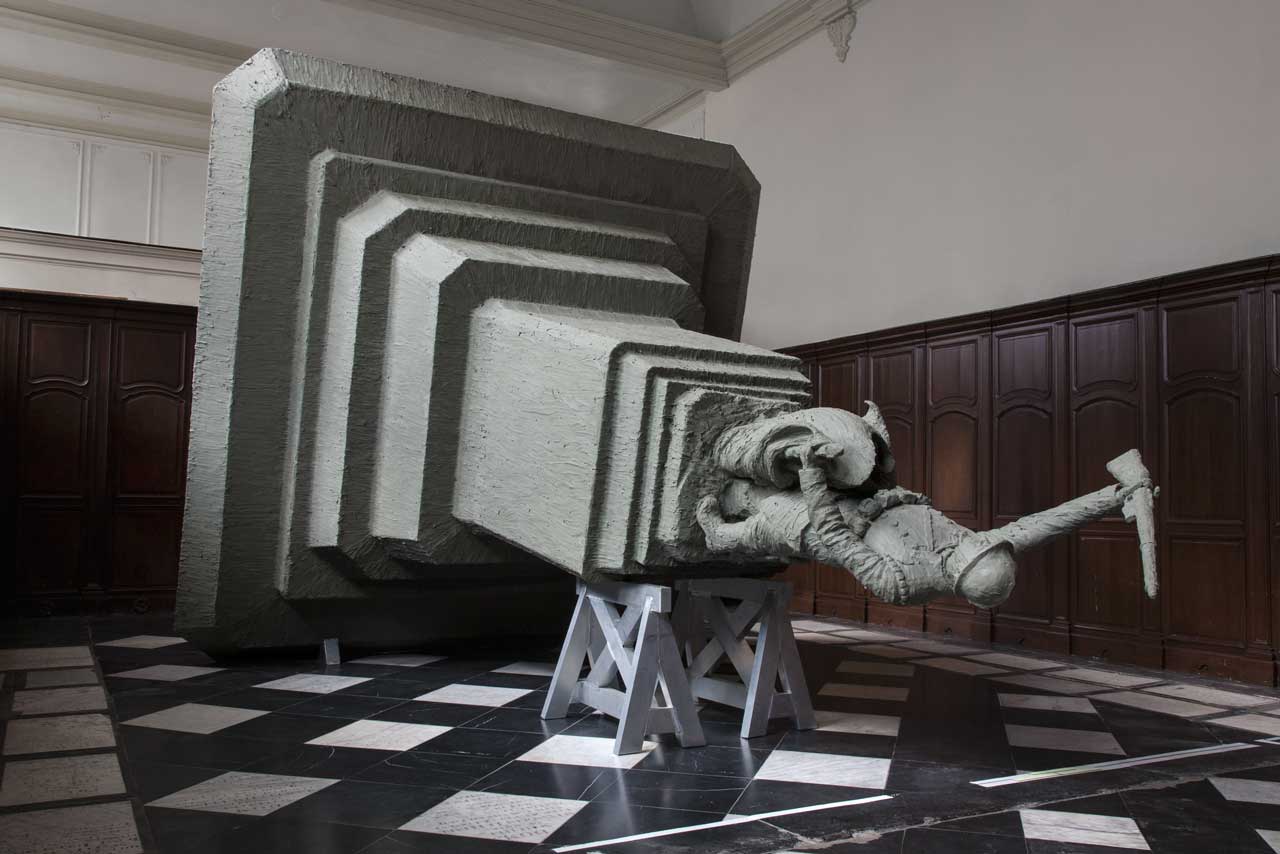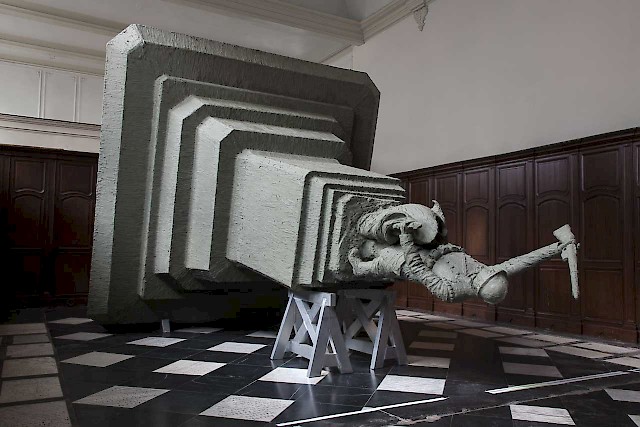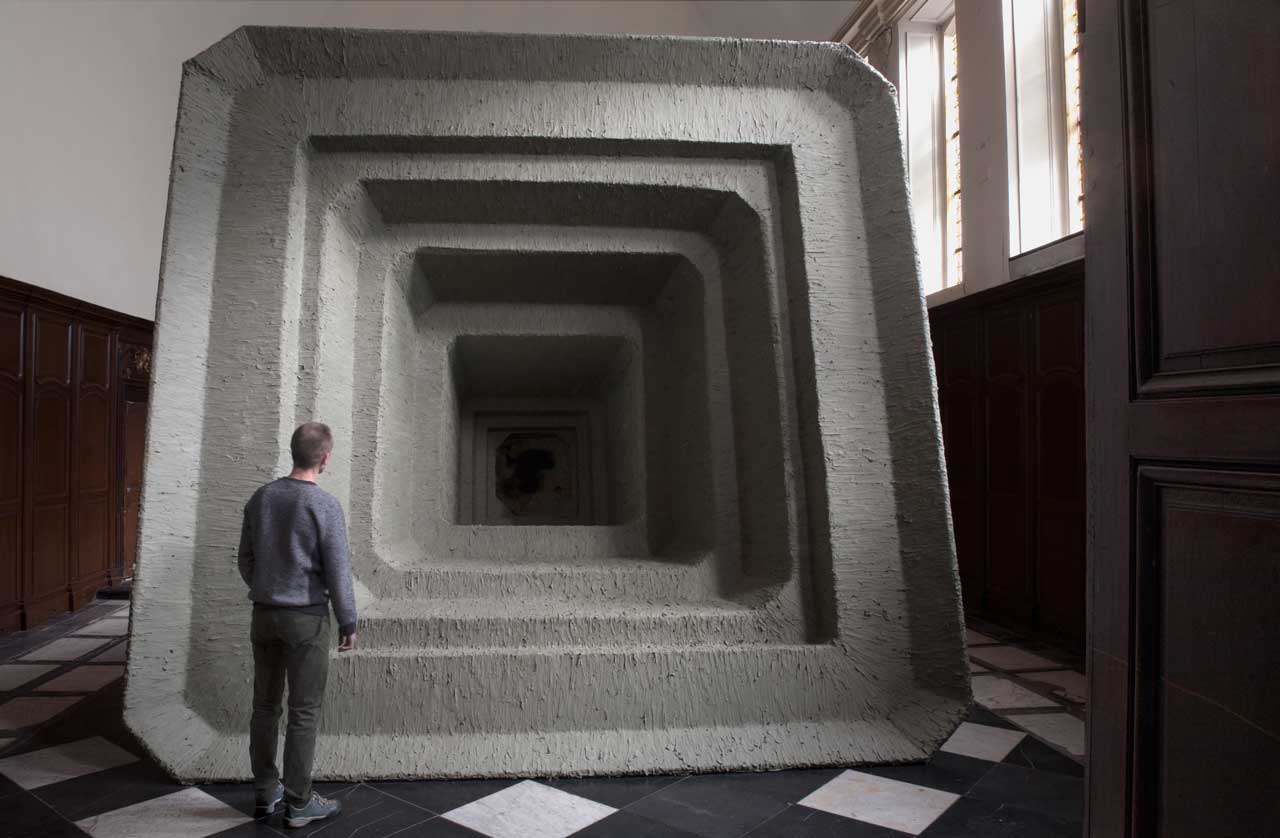Shot at Dawn
your life for the collective
Description
2016 / 2018
sculpture
400h x 400w x 615l



To serve
On my seventeenth birthday there
was a letter waiting for me on the table.
The letter was a strange kind of
present coming from the big world.
It caused mixed emotions. It made
me proud to be almost an adult, to
be taken seriously by the real world:
not halfheartedly like my parents and
school did, who mainly kept seeing
me as a child. I was now considered
equal and thus a full citizen. Someone
to wait for, someone who was going to
mean something for society. Someone
needed. But there was another feeling
that emerged. Though it seemed
honourable, was that really the case?
An invisible power enclosed me. I felt
blocked. Something was decided for
me without my opinion being asked.
Again adults determined my life: what
to do and what to think. But I was
convinced I would do it differently, I
would change the world!
The letter of the Dutch army was answered:
I wanted to refuse military
service. That was possible. Our open,
democratic and peaceful society allowed
this. There was a time this was
impossible. During WW1 unwilling
soldiers were executed when the army
command saw this fit.
In the name of the city of Poperinge
and non-porfit organisation Kunst, Jan
Moeyaert asked me to create a work
on this theme. A very honourable assignment
that perfectly lies in the line
of my work as an artist, in which I try
to fathom how we as a society deal with
conflicts and how we portray these conflicts
on television or on the internet
and how we capture them in monument
to commemorate.
I would like to share with you the associative
process I went through while
creating the sculpture. The starting point
of the work is the WW1 monument on
the market place of Poperinge. It is a
typical monument, like there are many
in Belgium and in the rest of the world.
A soldier on a pedestal. Heroically he
raises his arm in the air. He has won.
With one glance you can see who was the
winner and who lost, who was the enemy,
who was a coward and who a hero. The
pedestal of the monument is large, heavy,
strong: not made to wobble or tilt. The
monument has defended itself all this
time. You can see this on its outside.
Despite the danger of moss, bird droppings,
erosion by the sun, rain and frost
the monument is still standing strong
and shiny in its position, as to ward of
any doubt about heroism. It is rigid, immobile,
not capable of changing its mind.
In my imigination I carefully tilt the
monument. It is now lying on its back.
The bottom of the pedestal has become a
gigantic black hole. In the first part
a little light shines thourgh, but the
further I look inside the pedestal, the
darker it gets. I can just about see the
starting point of the soldier, the soles
of his shoes, his legs. And then it gets
really dark. Do I see his chest, his
neck? Can I look inside his head?
The darkness is impenetrable.
The pedestal lying down looks like a
funnel. Through the funnel the present
slinks in: it brings some clarity to that
darkness. Or is the funnel a horn through
which the past tries to shout out something
at us? An oracle? Do we here the
enthusiasm of the first weeks of the war,
the homesickness, the pride, the doubt,
the bloodlust, the rattle of death, the
cries of victory? Or do we mainly hear a
rustle? The rustle of our own blood?
Anno Dijkstra
